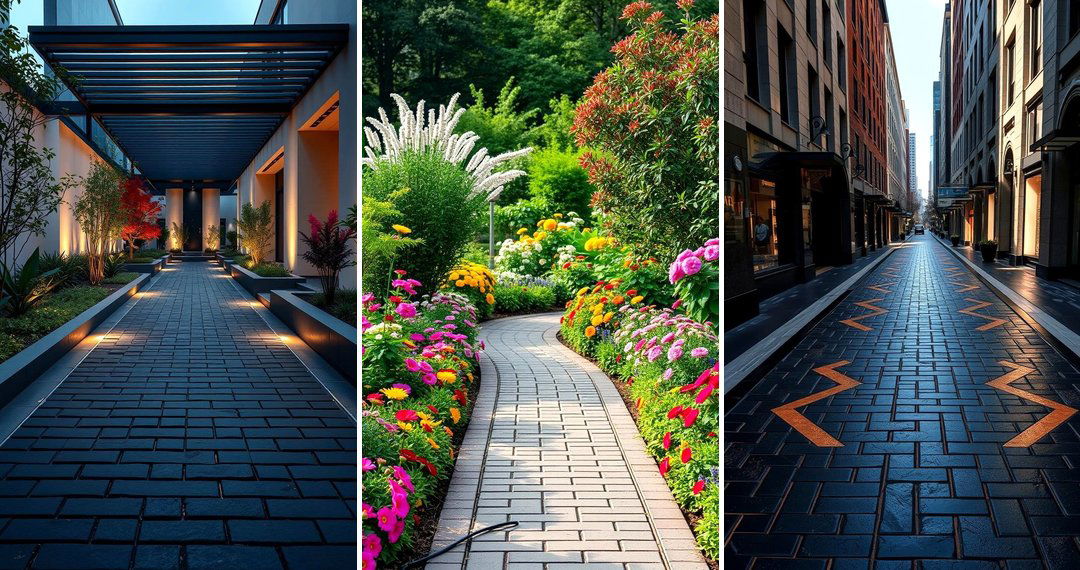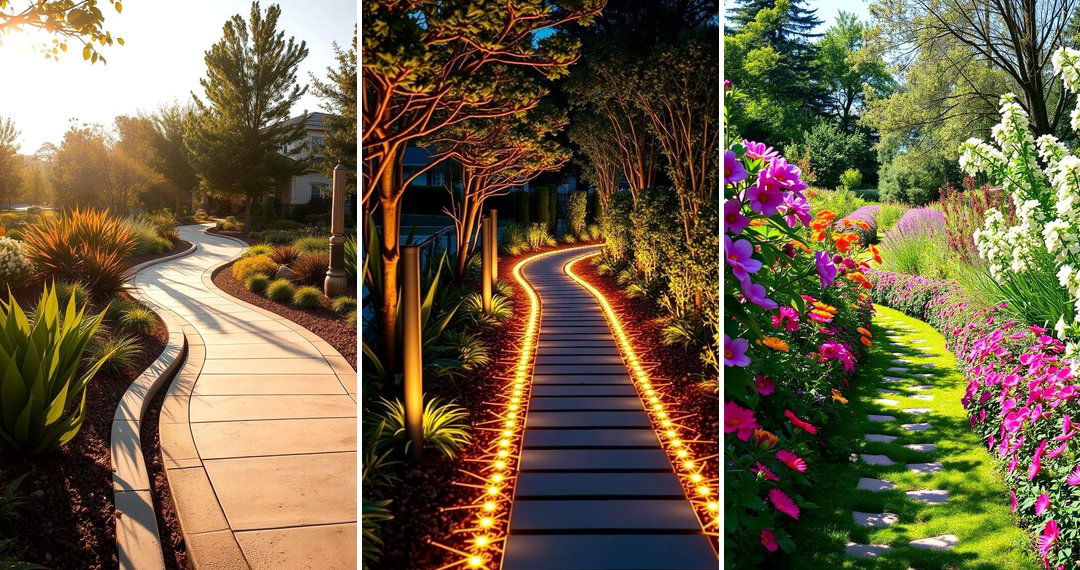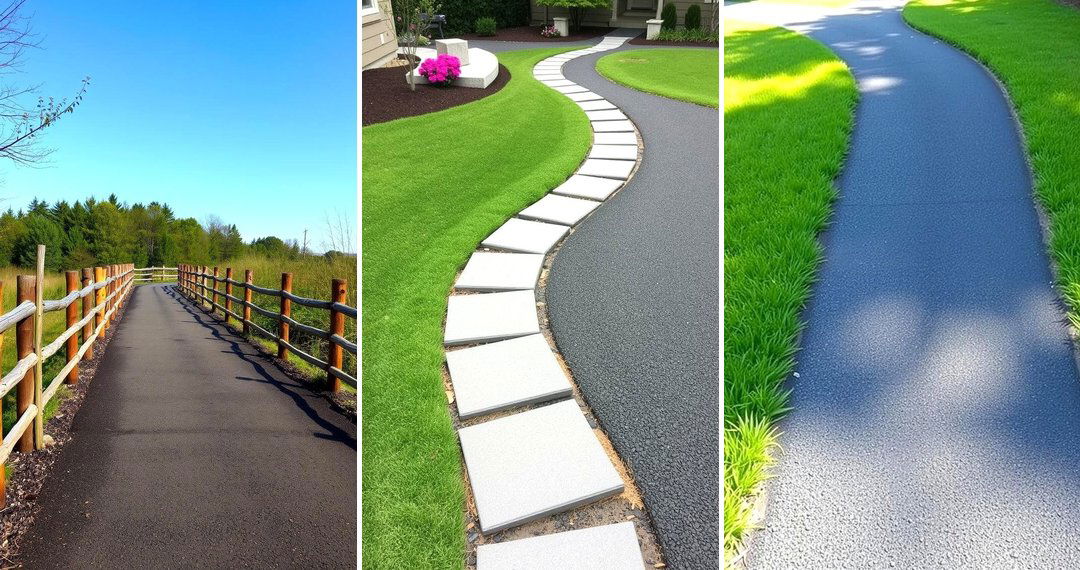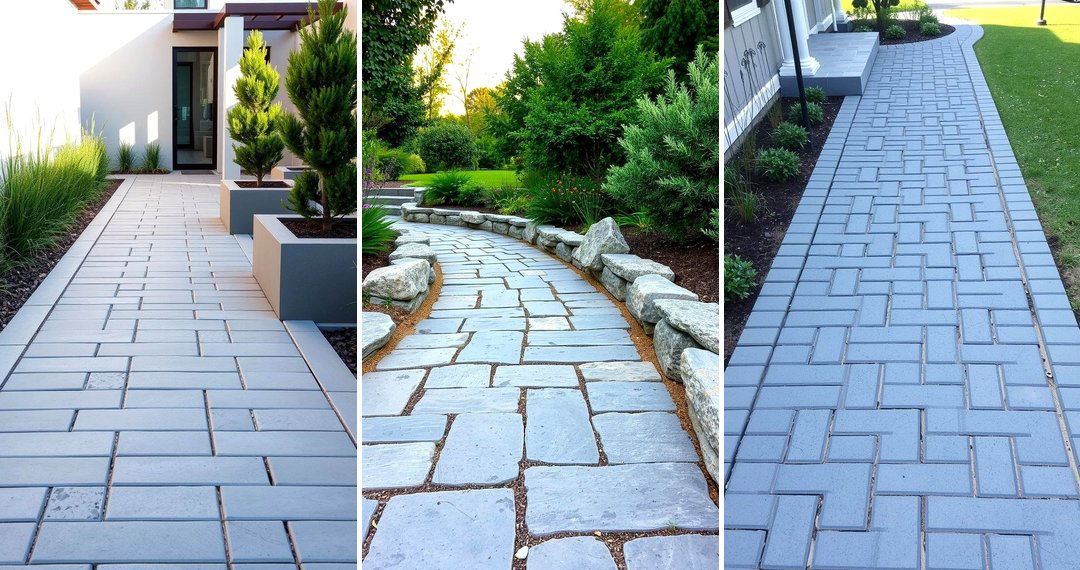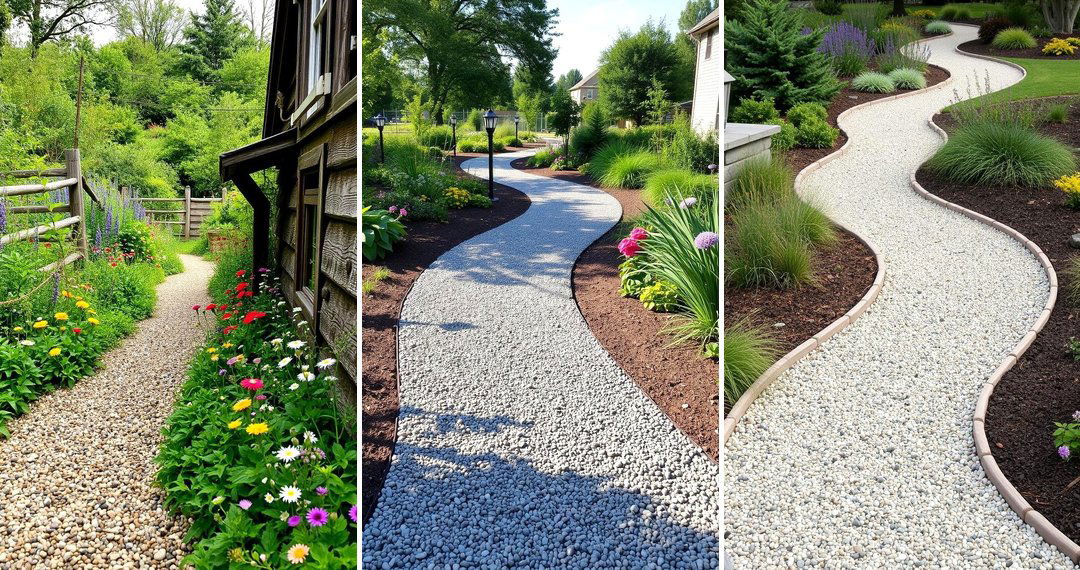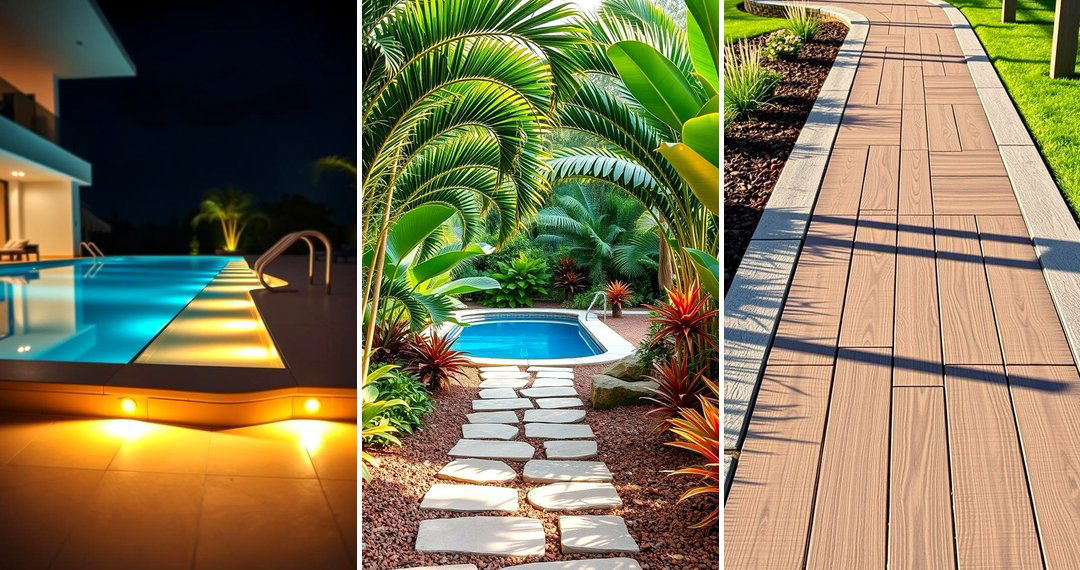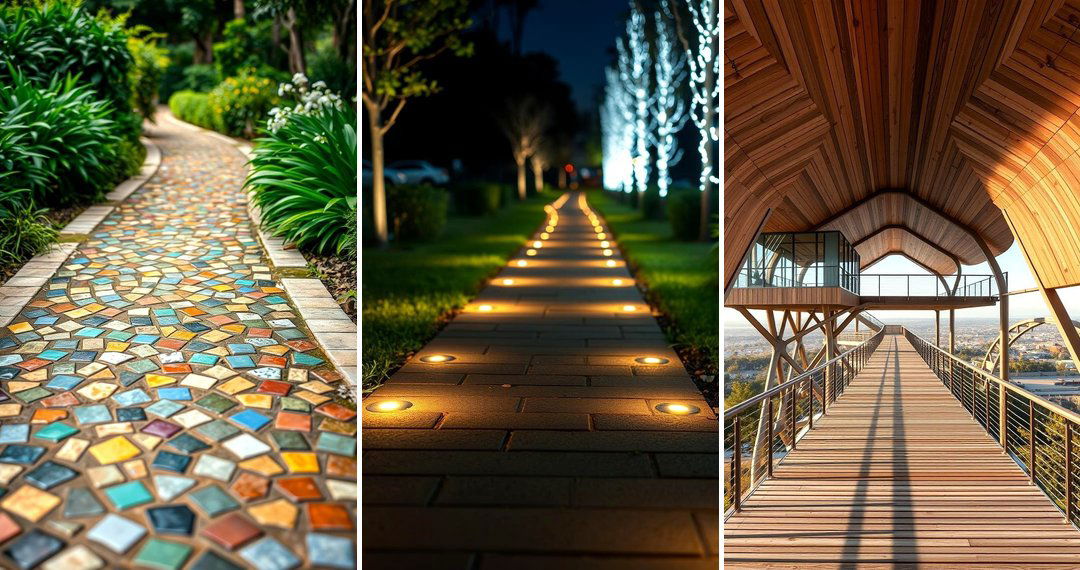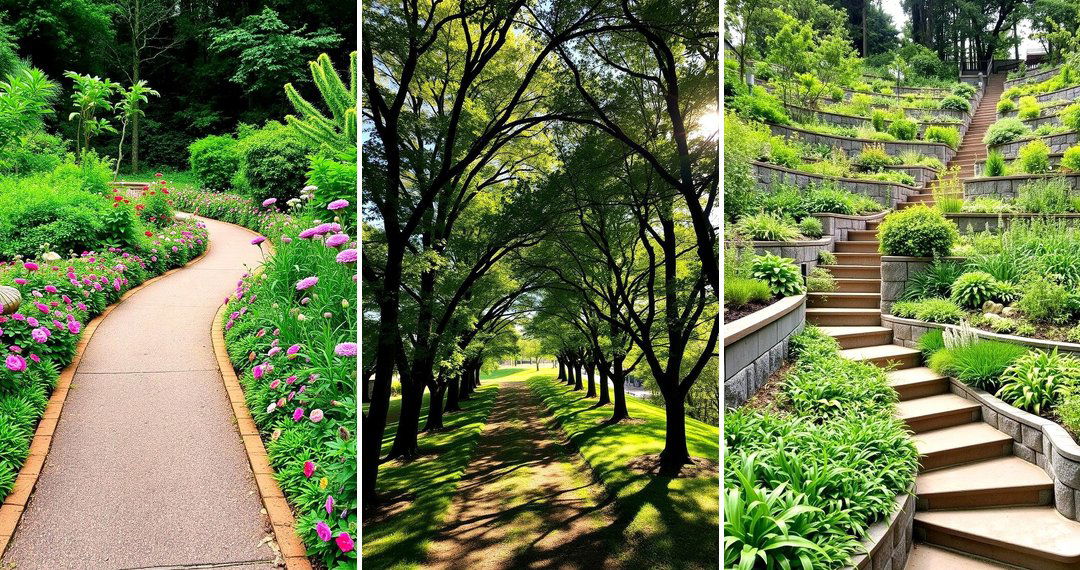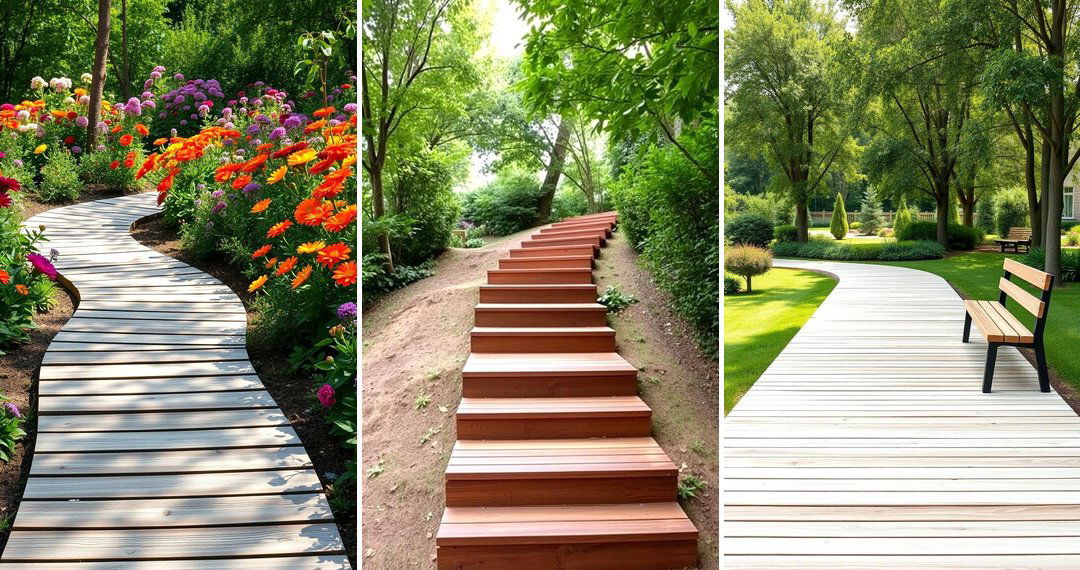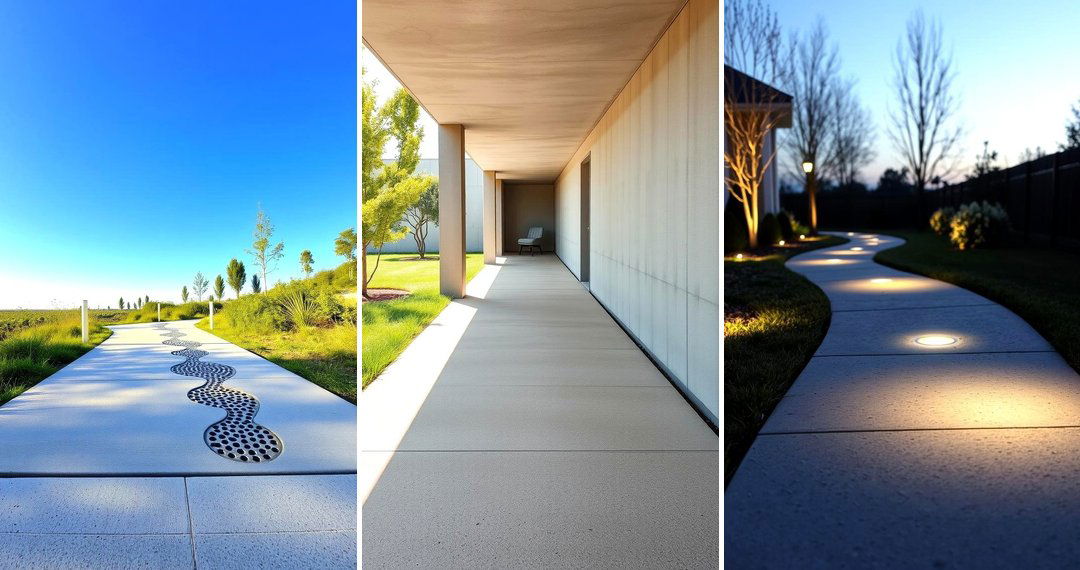Elevated walkways have become a popular architectural feature, offering functional, aesthetic, and environmental benefits. These walkways can transform landscapes, provide safer routes, and improve access to hard-to-reach areas. Whether you're planning to integrate an elevated walkway in an urban park, a residential property, or a nature reserve, there are countless possibilities to explore. From rustic wooden planks to modern steel designs, each walkway idea is an opportunity to enhance the space it occupies. Let’s dive into 24 elevated walkway ideas that can inspire you to create something truly unique and practical for your next project.
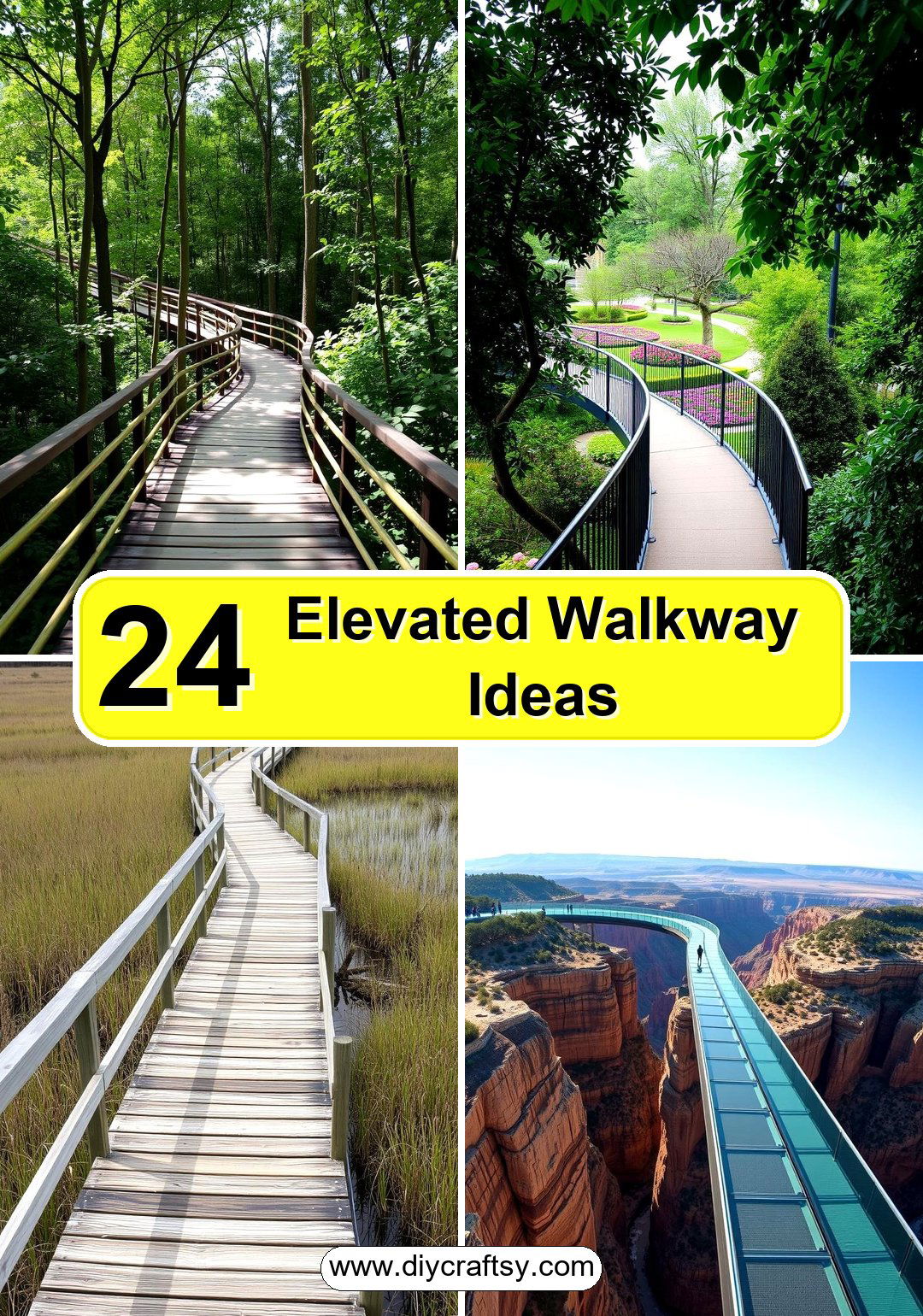
1. Wooden Plank Elevated Walkway in a Forest
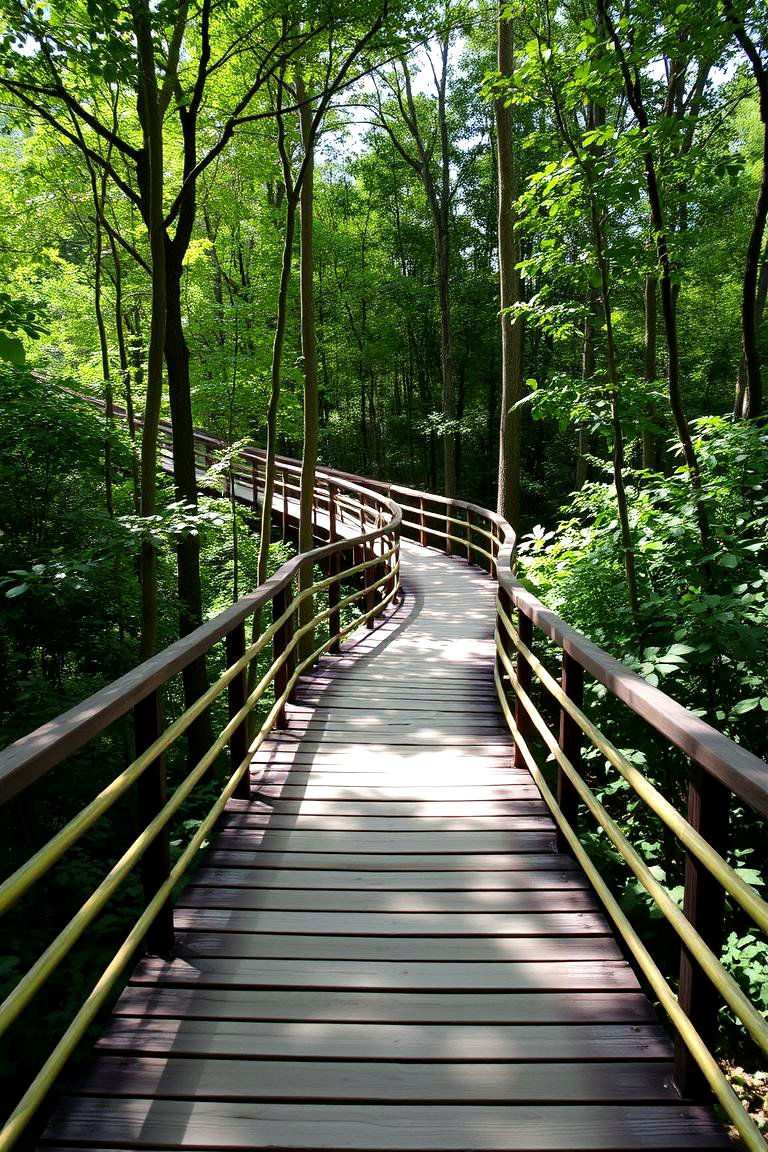
Imagine strolling through a lush, green forest on a gently elevated wooden plank walkway. This simple yet functional design connects visitors to nature, providing an elevated view of the surrounding flora. The use of natural wood not only blends harmoniously with the environment but also offers a rustic aesthetic that enhances the experience. These walkways are ideal for nature reserves or botanical gardens, offering a safe and scenic route without disturbing delicate ecosystems.
2. Glass-Floor Elevated Walkway

Ever wondered what it's like to walk above the ground, looking directly down at the landscape below? A glass-floor elevated walkway allows just that. It provides an exhilarating experience, combining safety with an unbeatable view of the terrain. Perfect for urban parks or areas with steep slopes, this type of walkway offers a modern, futuristic look that blends well with minimalist architectural designs. The transparency of the floor creates an immersive experience, ideal for thrill-seekers and nature enthusiasts alike.
3. Steel Bridge Walkway for Urban Areas
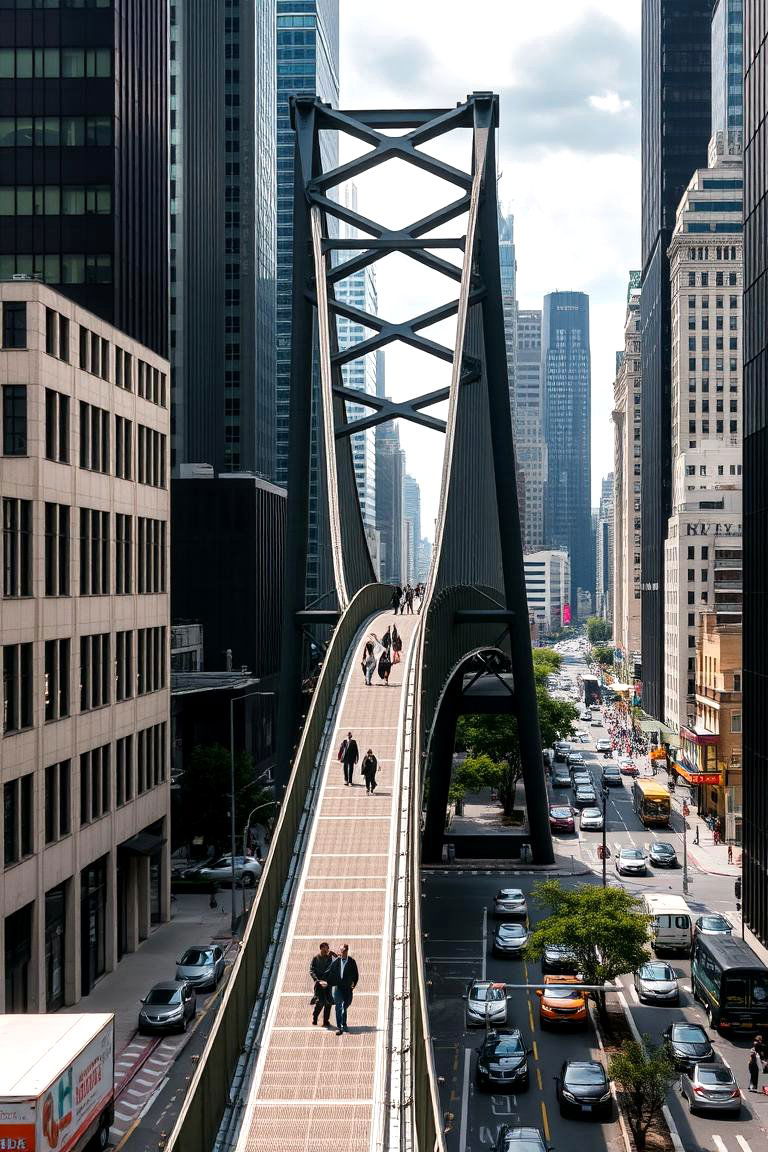
In urban environments, steel bridge walkways are a practical and durable choice. Their robust structure and industrial appearance fit well with modern cityscapes. These walkways are designed to withstand high traffic while offering unobstructed views of the surrounding urban environment. Whether crossing over a busy street, a river, or a railway, a steel walkway ensures safe passage while enhancing the aesthetics of the area.
4. Curved Elevated Walkway in a Garden

A curved elevated walkway adds a touch of elegance to any garden. By gently winding its way through the landscape, it encourages exploration and provides a new perspective on the garden’s features. This type of walkway works well in both large estates and smaller gardens, creating visual interest and offering a unique route through beautifully manicured spaces. The soft curve of the walkway complements natural plant growth, making it feel like a part of the landscape.
5. Suspension Walkway Over a Canyon
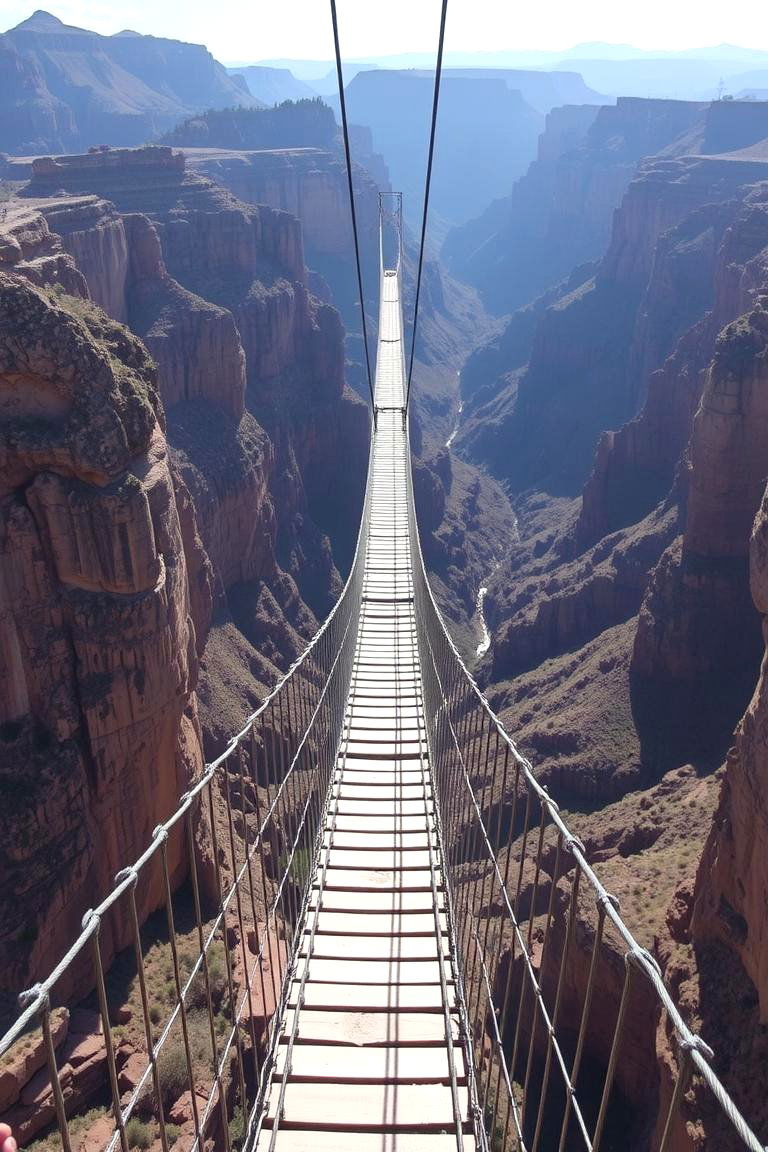
A suspension walkway offers a thrilling experience, especially when placed over a canyon or deep ravine. The dramatic view below makes walking along these structures an unforgettable experience. Made with durable cables and wooden planks or mesh flooring, suspension walkways provide both adventure and safety. Ideal for tourists or hikers, these walkways add excitement while allowing access to remote natural areas that would otherwise be difficult to reach.
6. Pedestrian Bridge Walkway with Integrated Lighting
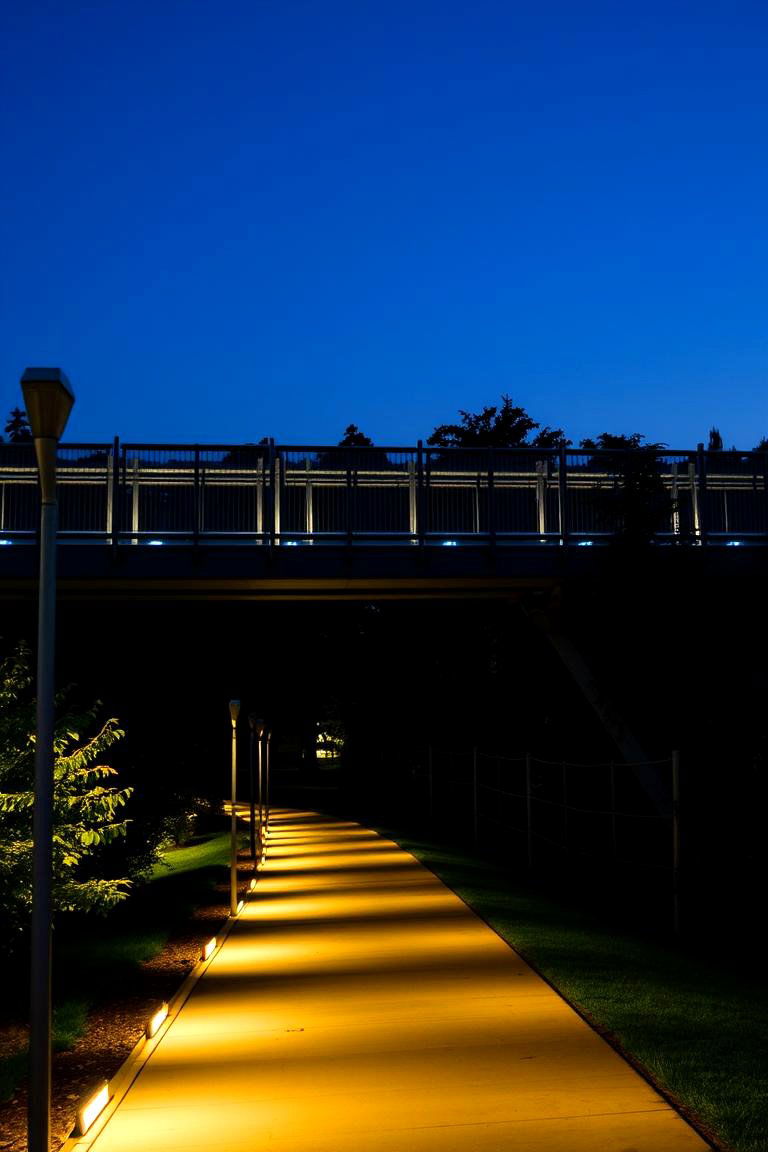
A pedestrian bridge walkway with integrated lighting creates a safe and attractive passageway during the evening. LED lights embedded into the walkway provide illumination without detracting from the design, creating a peaceful atmosphere after dark. This design works well in public spaces, parks, and campuses, offering both functionality and beauty. The lighting can also be customized to match the landscape or season, making it a versatile choice for various settings.
7. Elevated Walkway Through Wetlands
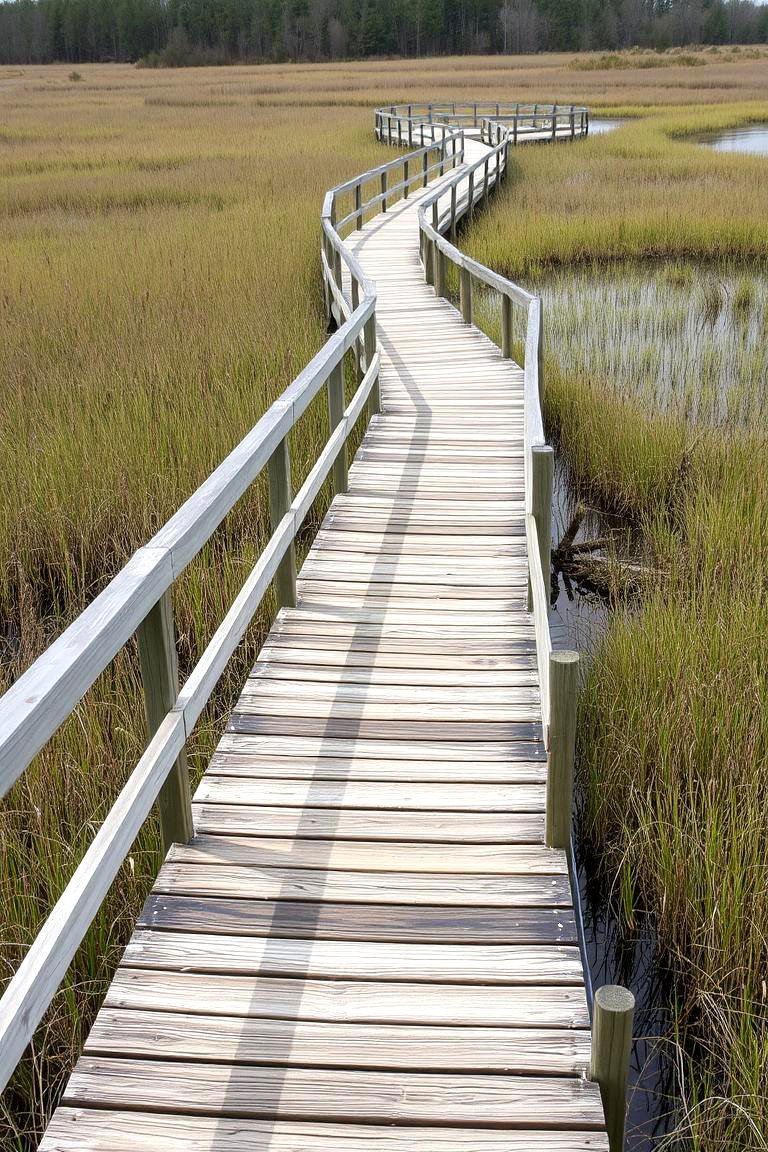
Elevated walkways through wetlands offer an eco-friendly and safe solution to navigating these delicate ecosystems. By elevating the walkway above the water, it prevents disturbance to the sensitive vegetation and wildlife while providing visitors with access to unique wetland environments. Constructed using eco-friendly materials, such as reclaimed wood or steel, these walkways help preserve the natural beauty of wetlands while offering educational opportunities for those interested in local wildlife.
8. Modern Concrete Elevated Walkway
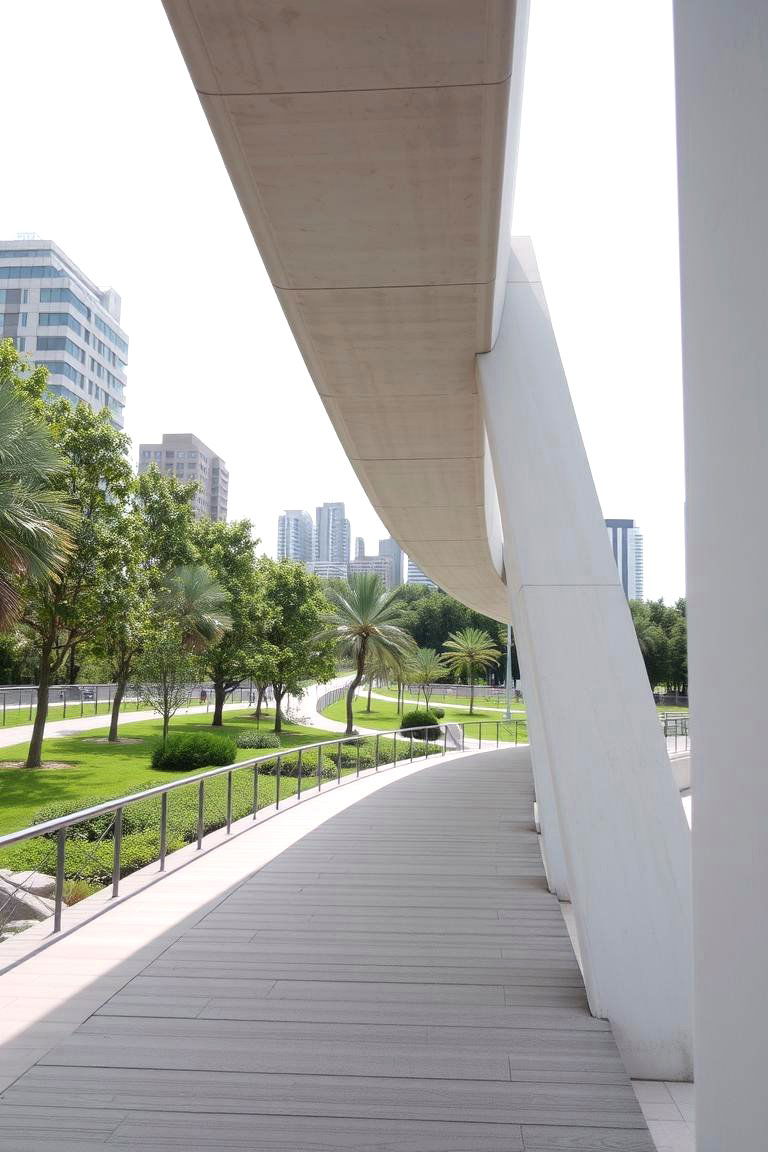
For a more contemporary and industrial feel, a concrete elevated walkway makes a bold statement. Its clean lines and minimalistic design create a sleek, modern aesthetic that fits well in urban settings or contemporary gardens. The sturdiness of concrete also makes it a reliable choice for areas with heavy foot traffic. By integrating this walkway into a modern design, it can serve both as a functional route and a striking architectural feature.
9. Elevated Walkway with Rest Stops
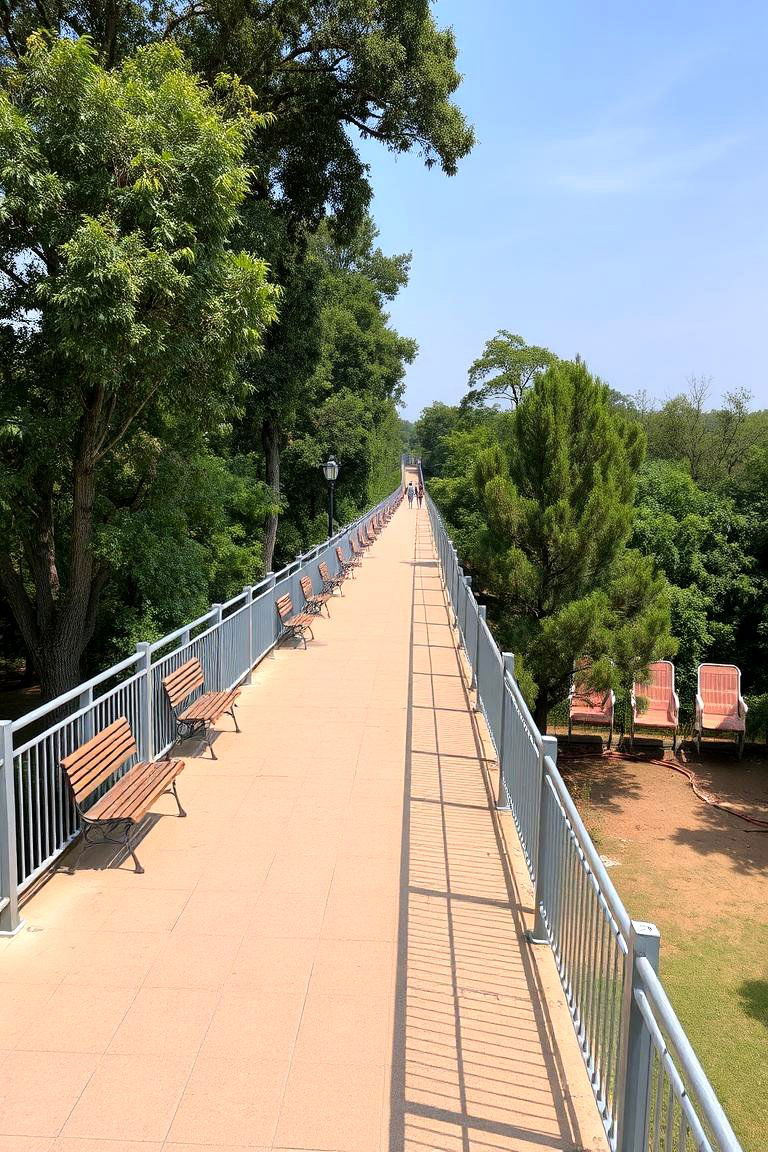
Incorporating rest stops into an elevated walkway design offers visitors a place to relax and enjoy the view. These walkways typically feature benches or small platforms where people can take a break while taking in the surrounding landscape. This design is particularly useful for longer walkways that span large outdoor spaces, such as parks, nature reserves, or tourist attractions. The added convenience encourages people to walk longer distances, making it a functional and inviting design.
10. Overwater Elevated Walkway

An overwater elevated walkway offers a serene and peaceful experience, allowing you to walk above a body of water. Whether placed over a lake, river, or coastal area, this type of walkway provides stunning views of the water and surrounding nature. The design can range from simple wooden planks to more intricate, modern constructions using glass or metal. The soothing sound of water beneath your feet adds an extra layer of tranquility, making it perfect for meditation or leisurely walks.
11. Elevated Walkway Connecting Treehouses
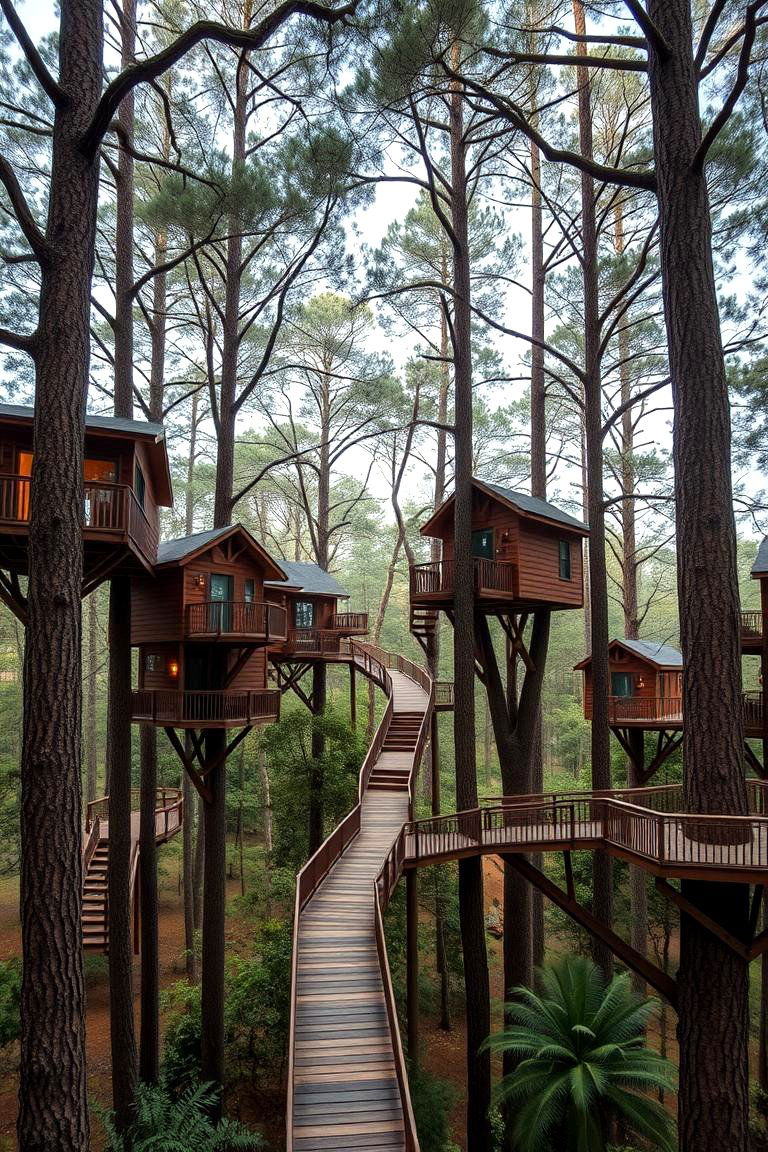
For treehouse communities or forest retreats, an elevated walkway connecting treehouses provides both function and adventure. These walkways offer safe access to multiple treehouses while allowing inhabitants to enjoy the forest canopy from above. Made of strong wood or metal, these walkways can be built to blend seamlessly with the trees and surrounding nature. Whether for a family retreat or a unique eco-lodge, these walkways add an exciting dimension to outdoor living.
12. Elevated Walkway with Botanical Overhead Canopy
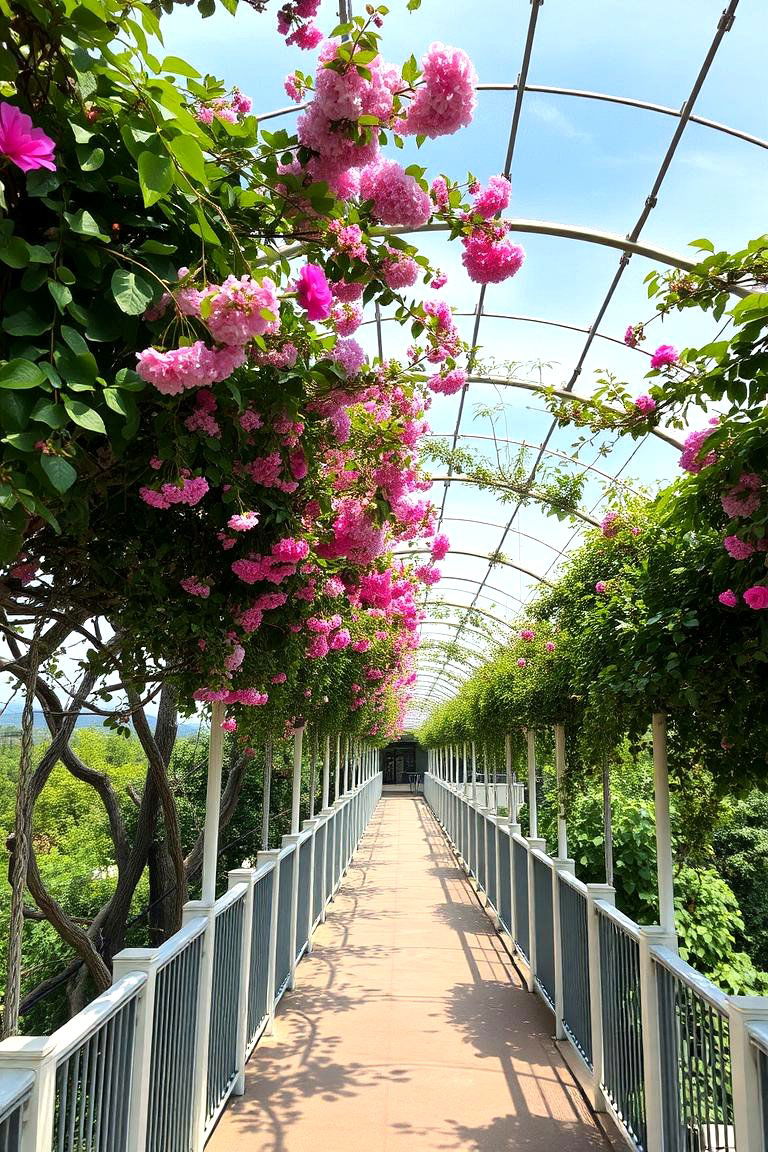
A botanical overhead canopy is a wonderful way to enhance an elevated walkway, especially in botanical gardens or nature parks. The canopy of vines, flowers, and greenery provides shade and protection from the elements while enhancing the sensory experience of walking through the area. Not only does it add beauty, but it also supports biodiversity by providing shelter for various types of plants and animals.
13. Minimalist Elevated Walkway
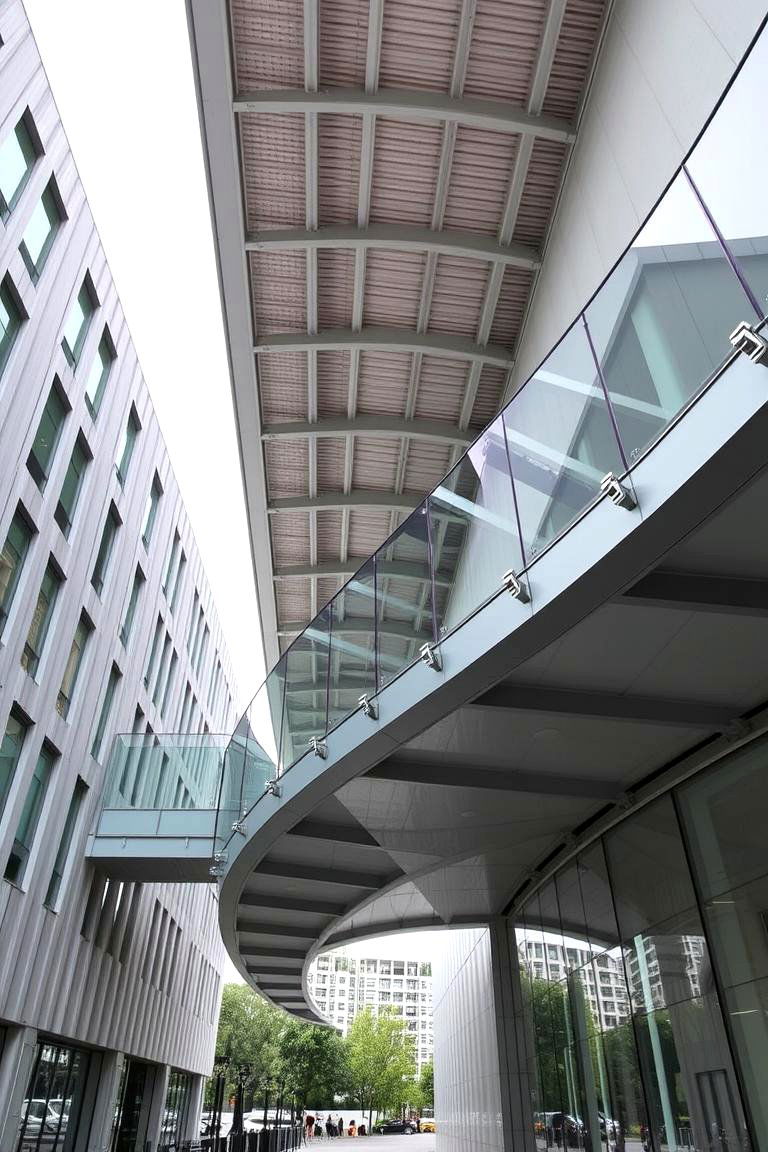
Minimalism in design offers a simple yet elegant approach to elevated walkways. Using sleek materials like polished steel or glass, this style emphasizes clean lines and understated beauty. A minimalist elevated walkway often focuses on functionality, with an emphasis on subtlety, allowing the surrounding environment to take center stage. This design works well in modern homes, city parks, or sleek urban spaces where aesthetics and utility need to complement each other.
14. Elevated Walkway with Artistic Railing Designs

An elevated walkway with artistic railing designs adds an artistic element to the structure. Custom-designed railings, whether geometric, floral, or abstract, can transform a simple walkway into a visually striking feature. These designs are ideal for spaces where art and architecture meet, such as public parks, art galleries, or private estates. The railing design can reflect the theme of the surrounding area, offering an additional layer of beauty.
15. Elevated Walkway with Integrated Greenery

Adding greenery to an elevated walkway creates a harmonious relationship between architecture and nature. This design integrates plants and flowers along the walkway’s edges or within the structure itself. Greenery not only beautifies the walkway but also provides environmental benefits, such as improving air quality and providing habitat for wildlife. Whether using climbing plants on metal trellises or planters along the edges, integrating greenery makes the walkway feel more natural and inviting.
16. Elevated Walkway with Historical Architecture Style
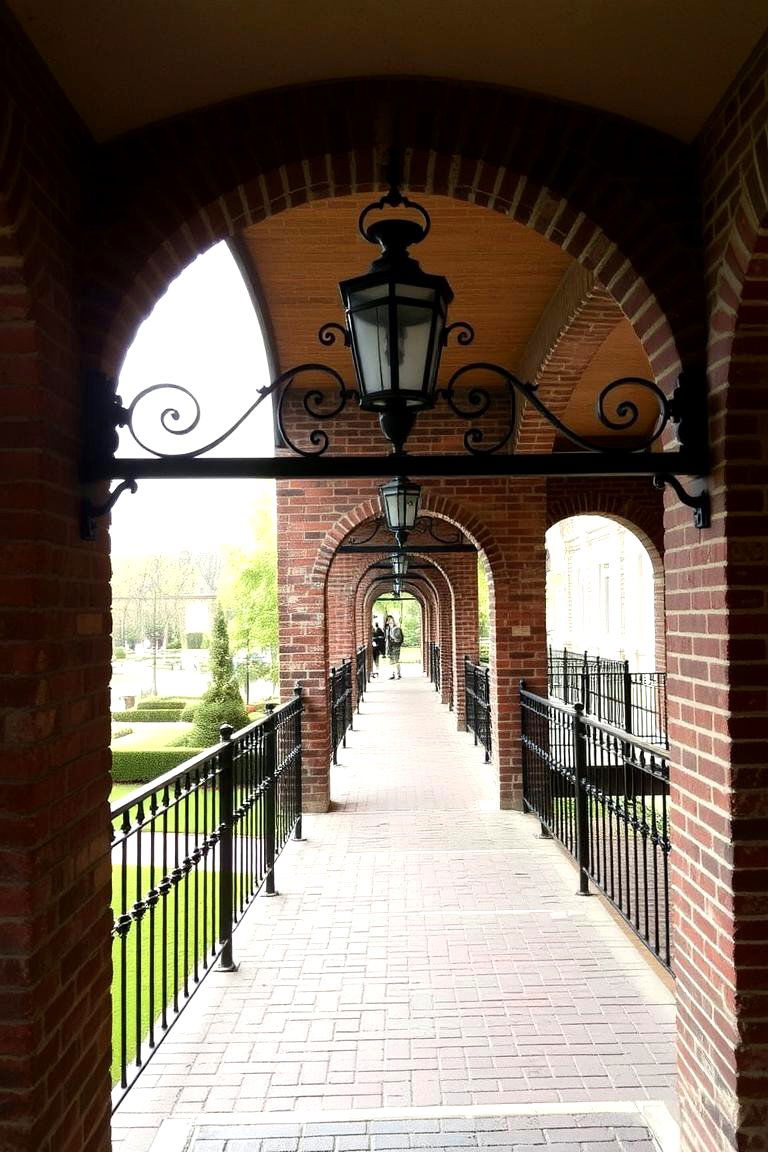
Incorporating historical architectural styles into an elevated walkway can create a unique blend of old and new. Whether drawing inspiration from classic European architecture or ancient structures, these walkways add cultural and historical value to the landscape. The materials used in these designs, such as stone, brick, or intricate wrought iron railings, enhance the traditional aesthetic, making the walkway feel like a part of history.
17. Elevated Walkway with Observation Tower
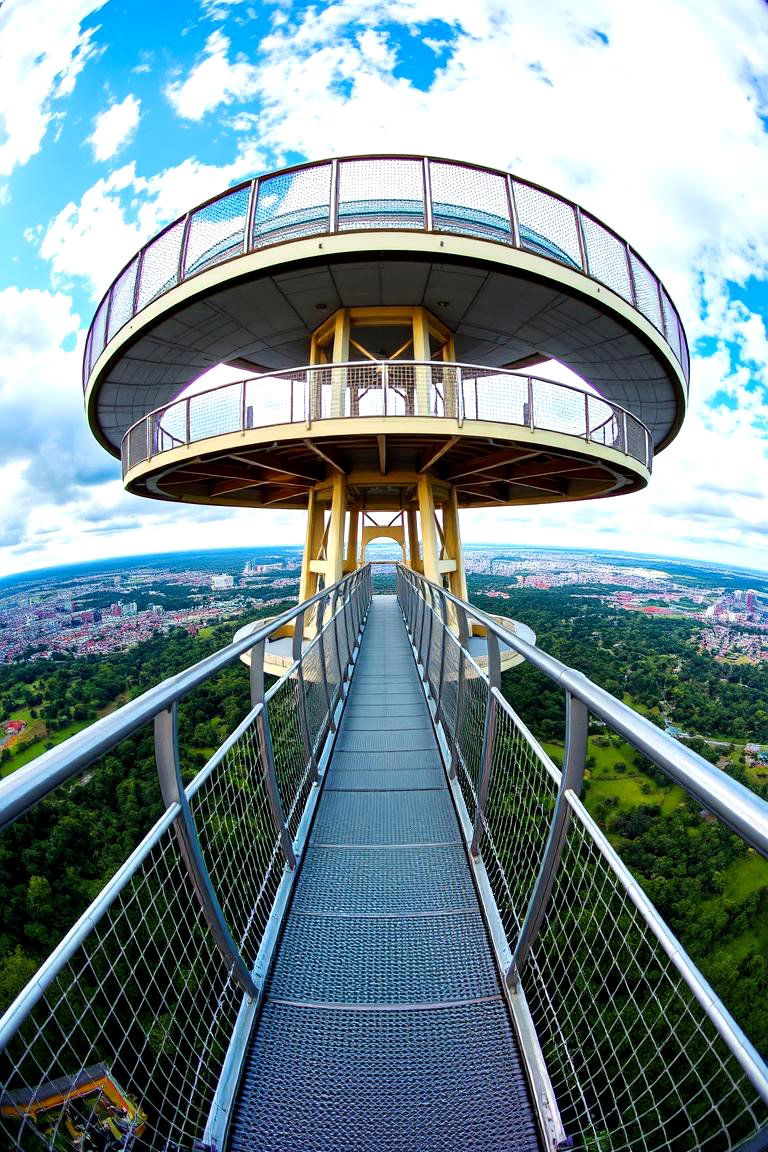
An elevated walkway with an observation tower is perfect for panoramic views. As visitors walk along the path, they are gradually elevated to the point where they can reach a high observation tower. These towers offer a 360-degree view of the surrounding landscape, providing a perfect vantage point for photography, wildlife observation, or simply enjoying nature. The walkway leading to the tower adds to the journey, enhancing the experience of reaching new heights.
18. Elevated Walkway with Waterfall Feature

Imagine walking along an elevated walkway while listening to the calming sound of a waterfall nearby. This design incorporates a waterfall feature either directly beneath or along the path of the walkway. The sight and sound of flowing water create a relaxing atmosphere, perfect for nature parks, resorts, or meditative spaces. The walkway itself can be built to provide a close-up view of the waterfall, making the experience even more immersive.
19. Elevated Walkway with Interactive Exhibits
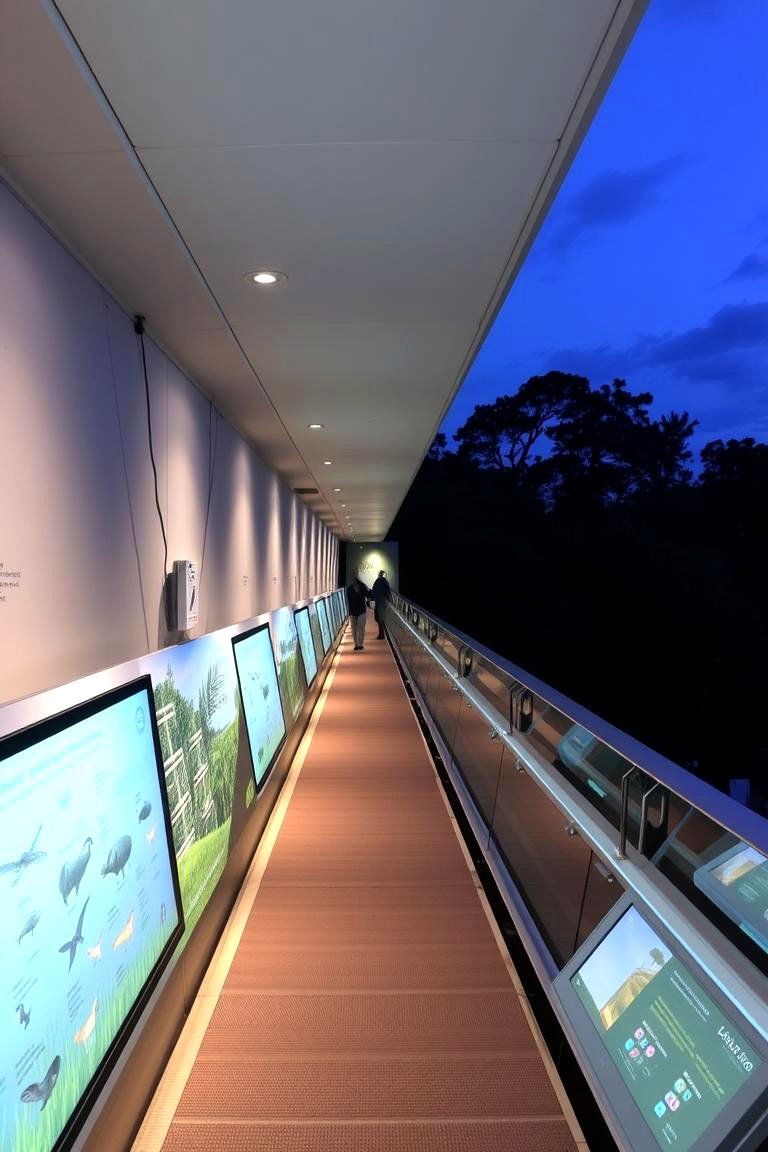
An elevated walkway can also serve as a learning tool by incorporating interactive exhibits along the way. These exhibits can focus on nature, science, or history, allowing visitors to learn while they walk. This design works well in museums, educational parks, or botanical gardens, offering both educational value and a unique walking experience. Interactive displays can range from touchscreens to hands-on exhibits, providing a dynamic and engaging experience for people of all ages.
20. Elevated Walkway with Sunset Viewing Platform
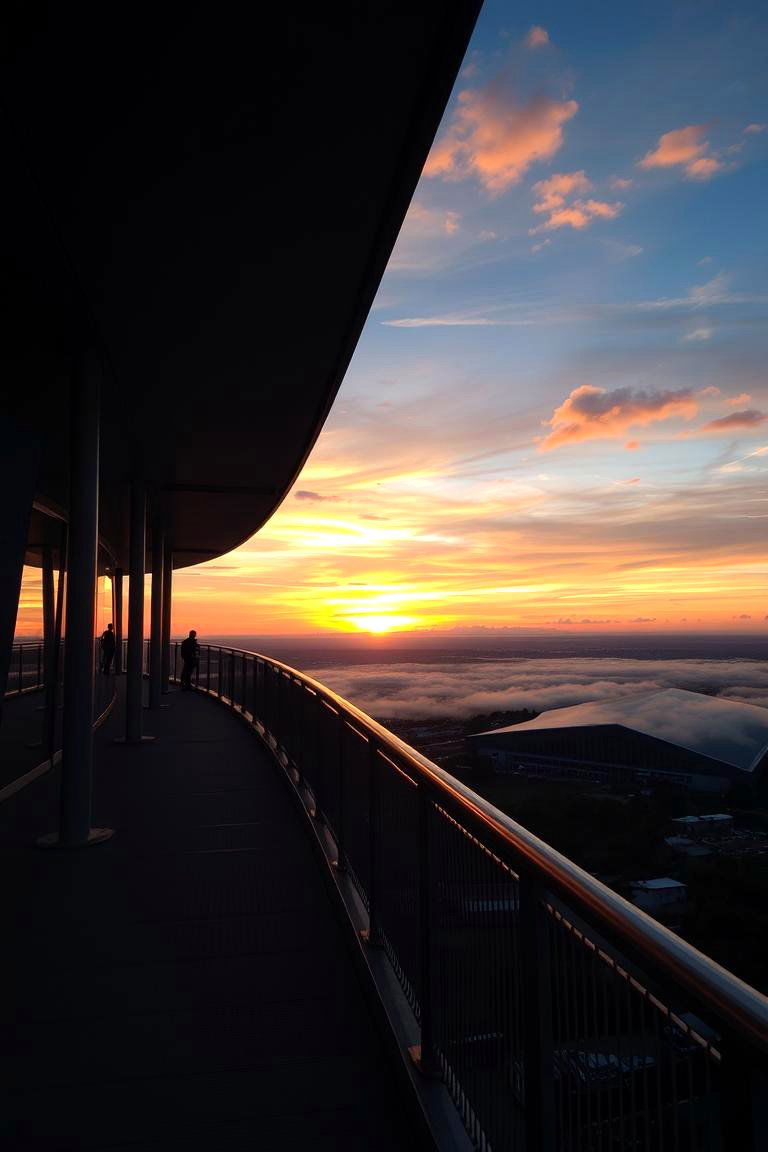
An elevated walkway with a dedicated sunset viewing platform provides a tranquil setting for people to watch the day’s end. By strategically placing benches or a platform along the walkway, visitors can take in the beauty of the sky as the sun sets. This design is perfect for coastal areas, hills, or scenic parks where the view of the horizon is unobstructed, offering a peaceful and meditative experience.
21. Elevated Walkway Connecting Buildings in a City
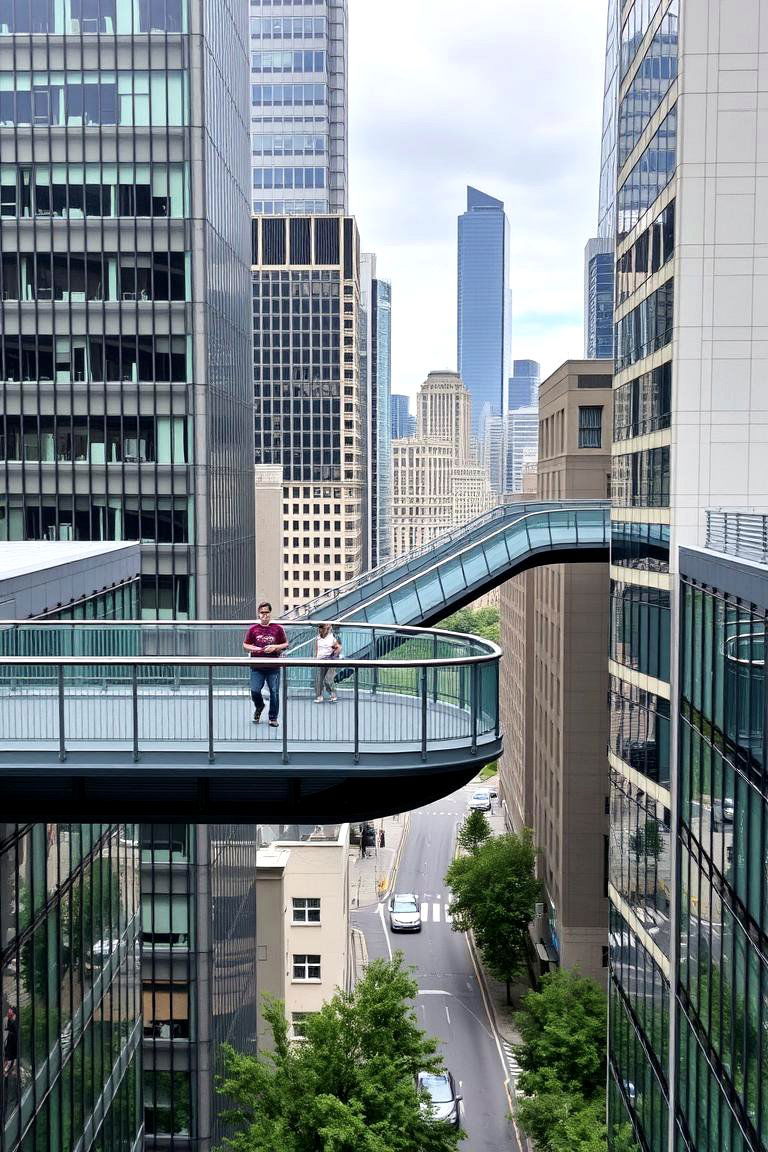
For city planners looking to create more pedestrian-friendly environments, an elevated walkway connecting buildings is an excellent solution. These walkways can link office buildings, shopping centers, or entertainment venues, providing an elevated route that avoids traffic below. Not only does this improve the pedestrian experience, but it also encourages more foot traffic and reduces congestion. The walkway can be designed to blend seamlessly with the city’s architectural style, contributing to the urban landscape.
22. Elevated Walkway with Rope Bridge
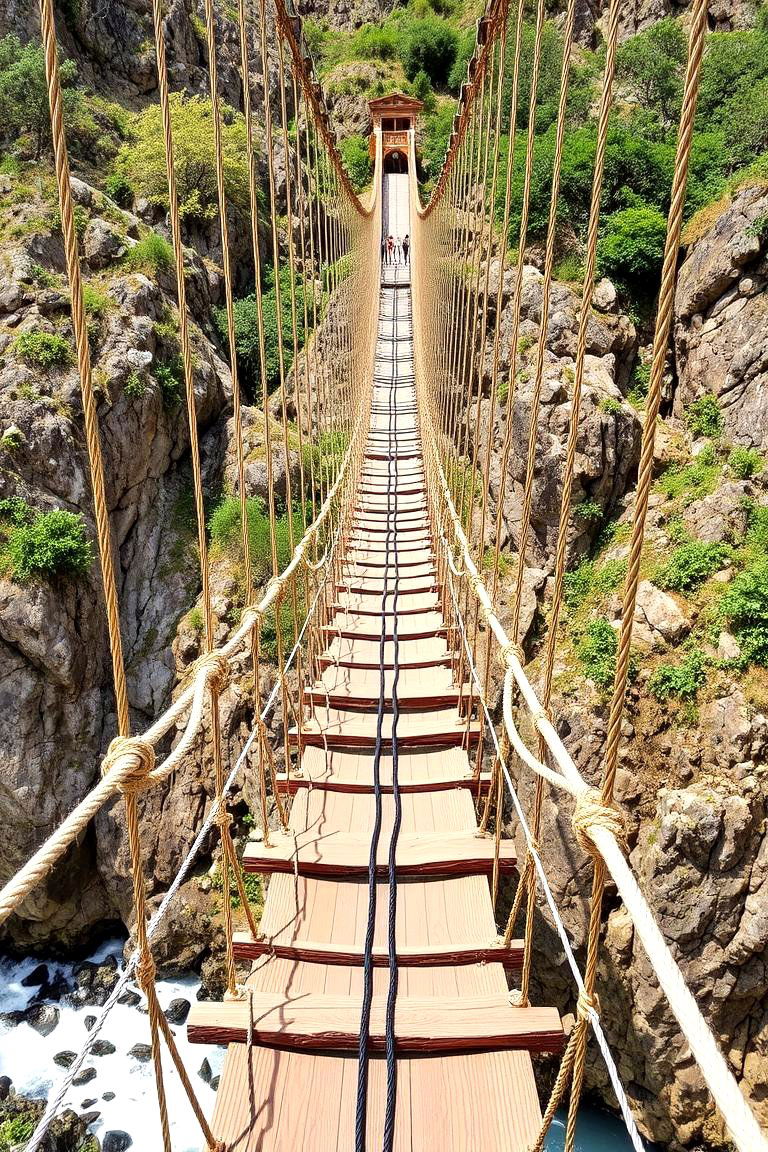
An elevated rope bridge creates an adventurous, rustic pathway that is perfect for outdoor enthusiasts. Often used in nature reserves or hiking trails, this type of walkway features sturdy ropes and wooden planks, offering a thrilling way to navigate steep terrains or cross ravines. The rustic aesthetic adds to the charm, making it feel like a true outdoor adventure. It’s an ideal option for eco-tourism or adventure parks looking to provide a unique experience for visitors.
23. Elevated Walkway for Residential Property
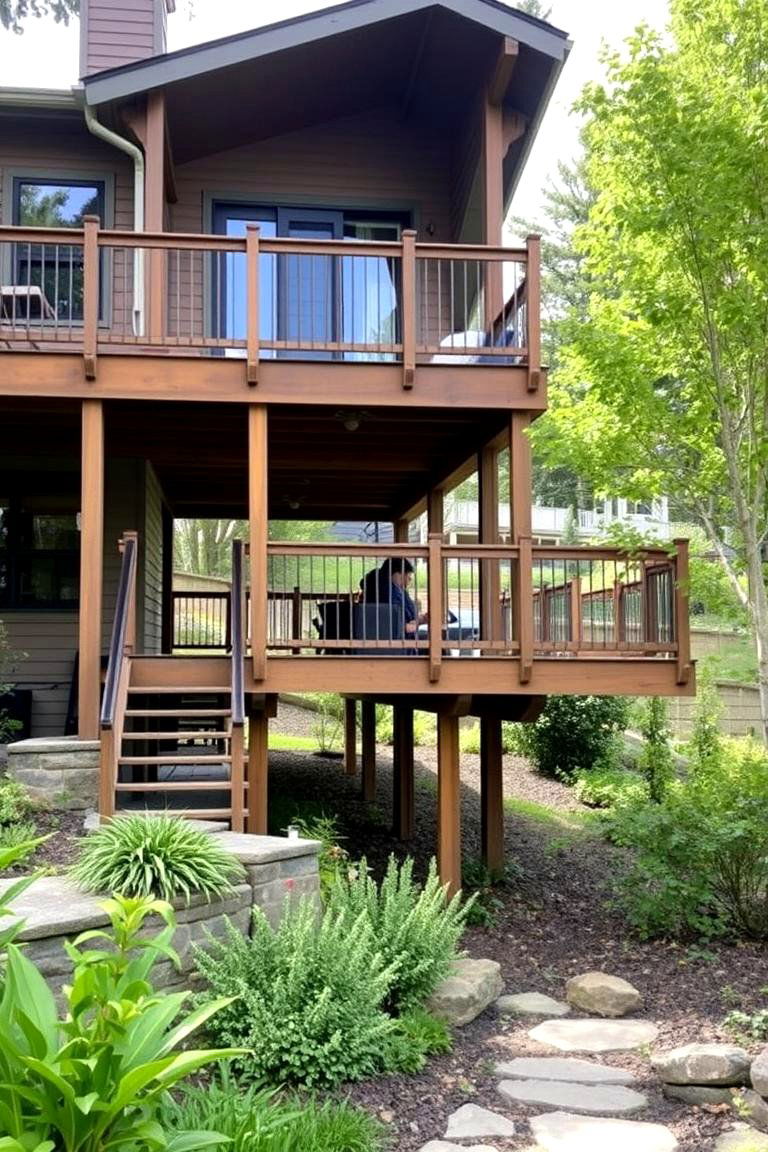
For residential properties, an elevated walkway can serve both as a practical solution and a design feature. Connecting different levels of the property, it can link the main house with a garden, outdoor deck, or guest house. By elevating the walkway, it allows for a more fluid design, blending seamlessly into the natural landscape while offering functional access to various parts of the property.
24. Elevated Walkway with Solar Panels
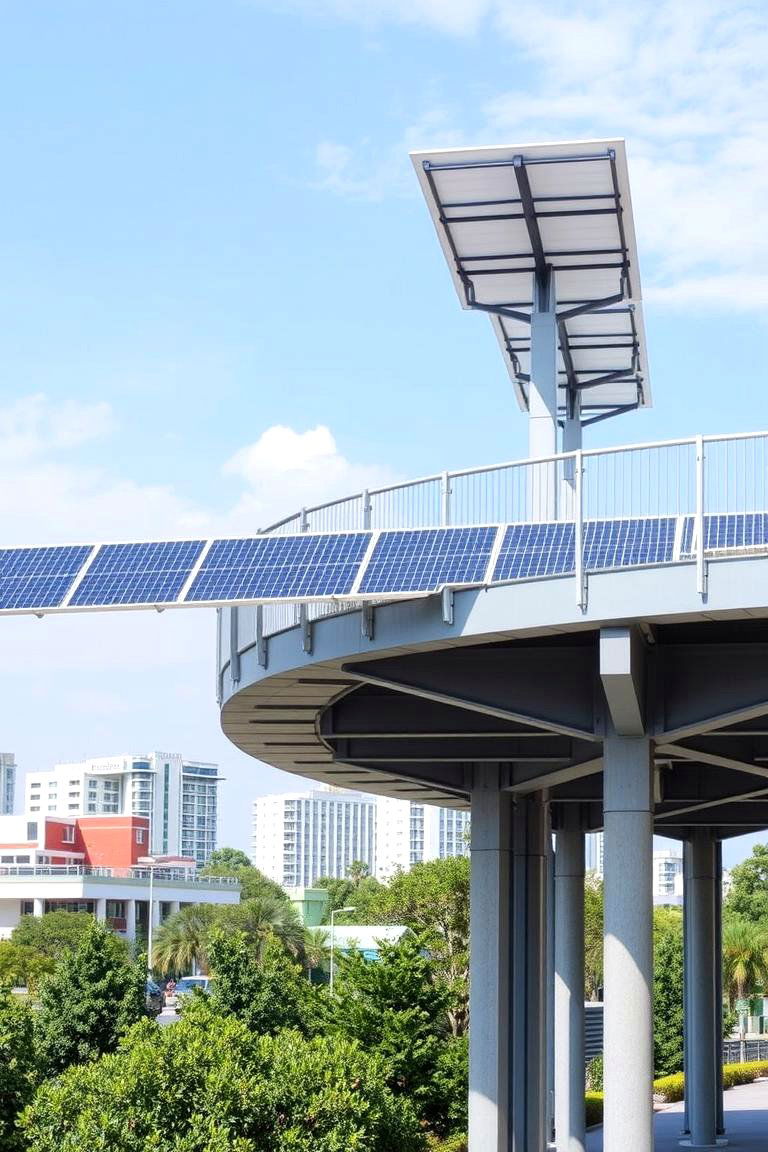
An elevated walkway with integrated solar panels is a sustainable solution that combines functionality with eco-consciousness. Solar panels on the walkway provide renewable energy that can power lights, security systems, or other utilities along the path. This design is ideal for environmentally conscious areas or off-the-grid locations, where sustainability is a key priority. The integration of solar power ensures that the walkway is both energy-efficient and eco-friendly.
Conclusion:
Elevated walkways offer diverse solutions to connect people with nature, improve accessibility, and enhance the aesthetic appeal of any space. From simple wooden paths to high-tech, eco-friendly designs, these structures can serve various purposes and environments. Whether you’re designing for a public park, a private garden, or an urban space, there are endless possibilities to create beautiful, functional walkways that inspire both practical use and visual delight. Explore these 24 elevated walkway ideas to bring your vision to life and elevate your surroundings.


